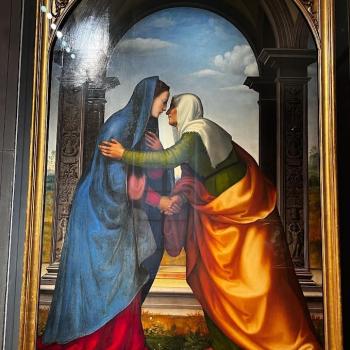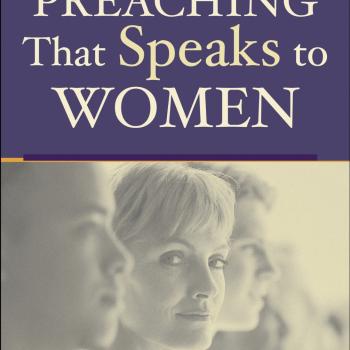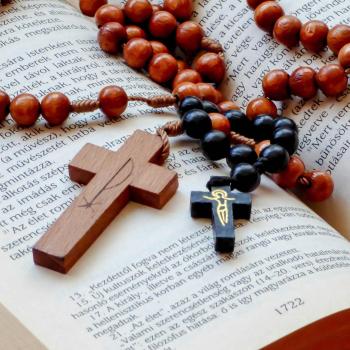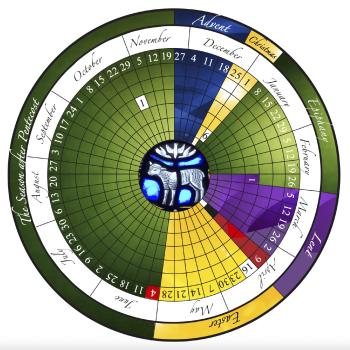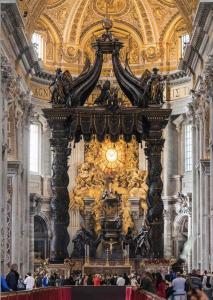 The church calendar looms large this time of year, as Christians worldwide prepare to celebrate the resurrection of Jesus Christ. Easter is the pinnacle of the church year, and it’s one of the two feast days that virtually every church, regardless of denomination, recognizes.
The church calendar looms large this time of year, as Christians worldwide prepare to celebrate the resurrection of Jesus Christ. Easter is the pinnacle of the church year, and it’s one of the two feast days that virtually every church, regardless of denomination, recognizes.
The other, of course, being Christmas.
Liturgical churches have been swathed in purple for the last month, somberly marking off time through the season of Lent. The forty days prior to Easter traditionally includes times of fasting and other self-denial as penitent believers contemplate the sin in their lives that made the cross necessary. But on Easter morning when the doors open, worshippers walk into sanctuaries draped in white and gold. Our senses are flooded with imagery reflecting the spiritual reality of our salvation—light has won over darkness.
Most Baptists, like my fellow worshippers, and other low-church Christians have no concept of what I’m describing. Church colors? Seasonal colors? SEASONS? Do you mean this calendar?
Why I’m Wondering (My Backstory)
(Skip to the next section to get on with the calendar…)
Having been raised Catholic, I’m very familiar with the liturgy of the Mass, the rhythm of the church calendar, and all the traditions that go along with observing age-old worship practices. What I did not receive, despite a Catholic education (grades 4–12), was clear teaching about what it all meant and why we performed the same rituals every week and year. What was the point? I wanted to know. And when that question went unanswered, I figured that they all started somewhere. Something centuries ago prompted Christians to begin practicing confession, the Mass, confirmation, child baptism, the way we read scripture, the church calendar, the devotion to Mary, the naming of certain saints, the celibate male priesthood, the Pope as supreme authority, etc. Mostly the answer I received resembled a form of “We’ve just always done it this way.”
Nope, not good enough.
The unanswered questions fed my interest in history, a latent fascination only just now bearing fruit. But during college I happily abandoned the liturgical tradition and found a home among evangelicals at a local Bible church. Not a stained-glass window to be found in the simple and rather stark building. I found it refreshing. The Bible was center-stage, and the only two “holy days” we celebrated were—you guessed it—Easter and Christmas. This pattern became my norm for decades, as I moved off to seminary and ended up joining an SBC church disguised as a Bible church (funny story). I didn’t miss the rote repetition of liturgy.
But then I began to notice that my Baptist church had its own version of liturgy. Each worship service followed the same pattern, and if it wasn’t an ancient pattern followed by millions it still repeated itself weekly to the several thousand in my congregation. Then, the church we’ve attended for 16 years added a recognition of Lent to its annual calendar. We established an Ash Wednesday service (since all good Baptists are at church on Wednesday nights anyway, right?). A few years later, we added Advent reflections to the Sundays preceding Christmas. Advent devotions were created for families to bring home. Sometimes we even celebrate Pentecost.
While I’d never accuse our Baptist church of looking liturgical, I do see an intentional effort to recognize and follow the annual church calendar. For the record, I love it.
Why a calendar?
We humans need memorials to help us remember. God knew this, and when he established his people Israel he established seven annual feast days to help them memorialize his work among and for them:
Passover—Leviticus 23:5
Unleavened Bread—Lev. 23:6
First Fruits—Lev 23:11
Pentecost (or Feast of Weeks)—Lev. 23:16, “50 days later”
Rosh HaShanah (Feast of Trumpets)—Lev. 25:8–10, first Fall feast
Yom Kippur (Day of Atonement)—Lev. 23:27
Sukkot (Feast of Tabernacles)—Lev. 23:34
Each feast day is worth a post of its own, but I want to get to the church calendar…
What is the Christian Calendar?
The liturgical calendar is a yearly cycle that corresponds to the life of Jesus from his birth to his resurrection, and then to the outpouring of the Holy Spirit at Pentecost. By the fifth century, the Christian church was celebrating regular feast days and memorials that roughly resemble our current calendar. Easter, or Resurrection Sunday, was the earliest (late 2nd century) and most commonly celebrated day among all the widespread churches. Christmas became more common in the fourth century.
Easter and Christmas anchor today’s annual calendar, which is organized to celebrate the invasion of the Incarnation and the triumph of the Resurrection. Three major holy days circle the Incarnation, three orbit the Resurrection, while Ordinary Time marks the other six months.
Major Seasons: Incarnation
Advent
The church year begins with Advent, the season preceding Christmas. Every late November/early December, the first of four Sundays prior to December 25, the church spends time reflecting on the coming of the savior. Not necessarily his first coming, but his yet-to-happen second coming. We acknowledge that we live in a world full of pain and confusion, that despite knowing our God and savior we yet wait for the fulfillment of his kingdom.
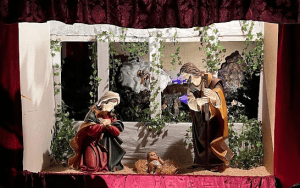
Christmas
The Incarnation, when God became a human in the form of a vulnerable baby, marked a seismic shift in the cosmos. God. Became. A human being. Pause and reflect on that glorious truth. As the hymn goes: “The hopes and fears of all the years are met in thee tonight. For Christ is born of Mary . . .” Jesus received his DNA, his humanity, from Mary alone as she was overshadowed by the Holy Spirit (Luke 1) when Jesus was conceived. When Christmas Day arrives, the celebration is supposed to be starting. Those twelve days of Christmas? They haven’t just ended but are just beginning. The celebration goes through the new year and up to January 6 (in the West).
Epiphany
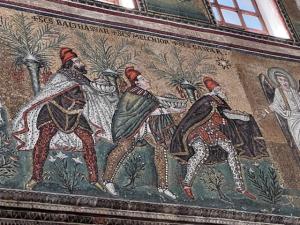
The season of Epiphany, which begins on the Day of Epiphany, “has a narrative arc beginning with the Magi and ending with the Transfiguration. The overall emphasis is the manifestation (showing forth) of the glory of Jesus Christ,” says Rev. Fleming Rutledge. Our Bible readings progress through the childhood of Jesus into his early days of ministry.
Major Seasons: Resurrection
Lent
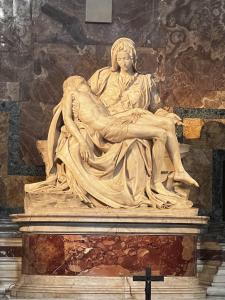
Forty days before Easter, the church inaugurates the season of Lent with Ash Wednesday, a holy day on which believers are encouraged to fast and pray. Special services are held that include a solemn ceremony of smudging ashes on the hands or foreheads of attendees. The traditional phrase from the pastor says, “From dust you came, to dust you will return,” though some offer an urgent “Believe the gospel!” Lent is traditionally a time of self-denial, with churches again swathed in dark colors. Scriptural readings take us through highlights of Jesus’s ministry, the opposition he faced, and finally his suffering and death (Good Friday).
Easter
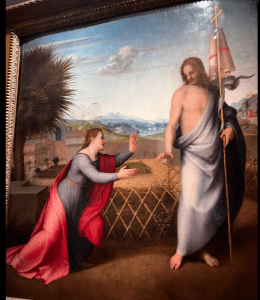
The pinnacle of the church year, we celebrate the resurrection of Jesus Christ as the one who defeated death and brings hope to all who call him Lord. He is risen! we tell one another. He is risen, indeed! we respond.
The Easter season lasts fifty days, as we follow Jesus’s post-resurrection life to the Ascension—forty days later—and finally the Jewish feast of Pentecost.
Pentecost
On this fiftieth day after Jesus rose from the grave, he sent his Holy Spirit to indwell, fill, and empower his disciples (Acts 2). The church was born.
Ordinary Time
The rest of the calendar year, a full six months, focuses on the lives of biblical characters. We read their stories and see ourselves in their flawed humanity, comforted to know we are not alone in our foolishness or sin and that God’s love and forgiveness reach us too. Ordinary Time tells us that our daily, ordinary lives matter to God, so they should matter to us as well. So as the first half of the year focuses on Christ, the rest of the year broadens its scope to the entire family of God.
Major Feast Days
In and among the seasons we find special days to mark moments worth remembering: Epiphany, Ash Wednesday, Ascension Day, Trinity Sunday, the Annunciation, and of course Easter and Christmas. Actually, each day of the year is dedicated to the memory of several saints whose lives offer inspiration to us. Feast days memorialized martyrs on the day of their death, not birth, for early Christians considered martyrdom to be graduation from life to life. The feasts of Patrick and Valentine remain cultural touchstones even today.
A quick online search will yield a number of calendars listing the daily feast days throughout the year.
Why Observe the Christian Calendar?
For those who worship in non-liturgical spaces, consider some benefits to observing the church calendar. To do so doesn’t require becoming fully liturgical, but you may end up adding a few elements common to other denominations. Why should you bother?
We reorient our view of the world.
The church calendar helps us to see the world through the life of Jesus our King. We live in an era where political messiahs come and go. One way to de-emphasize the politics of people is to proclaim the politics of heaven.
It offers a comprehensive exposure to the life of Christ.
We need to walk through Jesus’s whole life and emphasize different events so that God’s people can know that Easter is not complete without an Ascension Sunday. Celebrating the church calendar helps us understand the total Christ and his total life. Says my friend Missy Buchanan:
I cannot fully celebrate the resurrection joy of Easter without first feeling the gritty ashes of Ash Wednesday on my forehead, the stripping of the altar on Maundy Thursday and the extinguishing of candles during Good Friday Tennebrae. The liturgical calendar keeps me from jumping ahead to “feel good” and brings a necessary heightened awareness of the suffering, pain and sacrifice of Christ.”
It is a tool for discipling our children.
The church calendar gives parents beautiful ways to catechize children with Jesus. They learn the life of Christ, the hope of his second coming, and the rhythms of expecting what comes next in the Christian life.
It is a tool for discipling adults.
The church calendar helps us grow in our understanding of significant doctrines as we follow the life, death, and resurrection of Jesus. Regularly remembering God’s work through Christ and other Christians will encourage us in our own faith walk. Missy says, “Following the liturgical year brings a sense of anticipation, hope and comfort, not unlike the changing seasons in nature. For me it is not mindless ritual but an intentional spiritual framework that shapes my life and reflects the fullness of life in Christ.”
It is a tool for evangelism.
Our neighbors and friends will see us attending services, sacrificing for Lent, avoiding certain celebrations, regularly attending church, etc., etc.
And they will ask WHY.
In the end, the church calendar is a discipleship rubric, designed to focus our attention on Jesus while we live our ordinary lives as members of a worldwide faith community, inviting others into the family of God.



